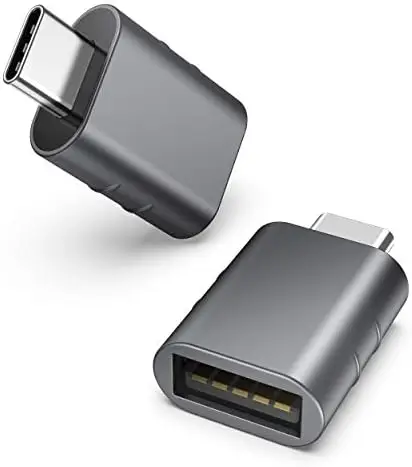How does a USB-C to USB 3.0 to USB adapter work?


USB-C to USB 3.0 adapters have become increasingly popular in recent years due to the widespread adoption of USB-C ports in modern devices. These adapters allow users to connect their USB-C devices to USB 3.0 ports, providing compatibility and convenience. But how exactly does a USB-C to USB 3.0 adapter work? In this article, we will explore the inner workings of these adapters and explain how they enable seamless connectivity between different USB standards.
Understanding USB-C and USB 3.0
Before delving into the functionality of USB-C to USB 3.0 adapters, it is essential to have a basic understanding of USB-C and USB 3.0 technologies.
USB-C, also known as USB Type-C, is a relatively new USB standard that offers several advantages over its predecessors. It features a reversible connector, meaning that it can be plugged in either way, eliminating the frustration of trying to insert the USB cable correctly. USB-C also supports faster data transfer speeds, higher power delivery, and the ability to transmit audio and video signals.
On the other hand, USB 3.0, also known as SuperSpeed USB, is an older USB standard that provides faster data transfer rates compared to its predecessors. USB 3.0 ports are typically denoted by their blue color and offer data transfer speeds of up to 5 gigabits per second (Gbps), ten times faster than USB 2.0.
How Does a USB-C to USB 3.0 Adapter Work?
A USB-C to USB 3.0 adapter acts as a bridge between devices with different USB standards. It allows you to connect a USB-C device, such as a smartphone or laptop, to a USB 3.0 port on a computer or other peripheral device.
The adapter itself consists of a USB-C connector on one end and a USB 3.0 connector on the other end. The USB-C connector is inserted into the USB-C port of the device, while the USB 3.0 connector is plugged into the USB 3.0 port of the peripheral device.
When the adapter is connected, it establishes a connection between the USB-C and USB 3.0 interfaces, enabling data transfer and power delivery. The adapter contains circuitry that converts the USB-C signals into USB 3.0 signals and vice versa, ensuring compatibility between the two standards.
Benefits of Using a USB-C to USB 3.0 Adapter
Using a USB-C to USB 3.0 adapter offers several benefits, including:
1. Compatibility: USB-C to USB 3.0 adapters allow you to connect USB-C devices to older devices with USB 3.0 ports, ensuring compatibility and seamless connectivity.
2. Data Transfer Speeds: USB 3.0 offers faster data transfer speeds compared to previous USB standards. By using a USB-C to USB 3.0 adapter, you can take advantage of these faster speeds when transferring files between devices.
3. Power Delivery: USB-C supports higher power delivery compared to USB 3.0. However, by using a USB-C to USB 3.0 adapter, you can still charge your USB-C device using the power provided by the USB 3.0 port.
Other USB-C Adapters and Accessories
In addition to USB-C to USB 3.0 adapters, there are several other USB-C adapters and accessories available in the market. These include:
1. USB-C to USB Adapter: This adapter allows you to connect USB-C devices to standard USB-A ports, which are commonly found on older computers and peripherals.
2. USB-C to USB 3.0 Cable: This cable features a USB-C connector on one end and a USB 3.0 connector on the other end, allowing you to connect USB-C devices directly to USB 3.0 ports without the need for an adapter.
3. USB-C to USB 3.0 Converter: Similar to a USB-C to USB 3.0 adapter, a USB-C to USB 3.0 converter enables connectivity between USB-C and USB 3.0 devices. However, a converter typically features a short cable with a USB-C connector on one end and a USB 3.0 connector on the other end.
4. USB-C to USB 3.0 Hub: A USB-C to USB 3.0 hub expands the number of available USB 3.0 ports on a USB-C device. It allows you to connect multiple USB 3.0 devices to a single USB-C port, providing convenience and flexibility.
Conclusion
USB-C to USB 3.0 adapters play a crucial role in enabling connectivity between devices with different USB standards. By converting USB-C signals into USB 3.0 signals and vice versa, these adapters ensure compatibility and seamless data transfer between devices. Whether you need to connect a USB-C device to a USB 3.0 port or vice versa, a USB-C to USB 3.0 adapter provides a simple and effective solution. Additionally, other USB-C adapters and accessories offer further flexibility and convenience, allowing you to make the most of your USB-C devices in various scenarios.
Recent Posts
How do I create an engaging and informative online quiz or assessment?
Creating an engaging and informative online quiz or assessment can be a powerful tool for… Read More
What are the most effective methods for managing and reducing work-related stress in the hospitality industry?
Work-related stress is a common issue in the hospitality industry, where employees often face long… Read More
How can I improve my assertiveness and communication skills in a leadership position?
In a leadership position, assertiveness and effective communication skills are crucial for success. Being able… Read More
What are the key elements of a successful employee recognition and rewards program?
Employee recognition and rewards programs play a crucial role in motivating and engaging employees, as… Read More
How do I effectively manage and respond to customer feedback and reviews?
Customer feedback and online reviews play a crucial role in shaping a company's reputation and… Read More
What are the best strategies for effective time management as a stay-at-home parent?
Effective time management is crucial for stay-at-home parents who juggle multiple responsibilities on a daily… Read More